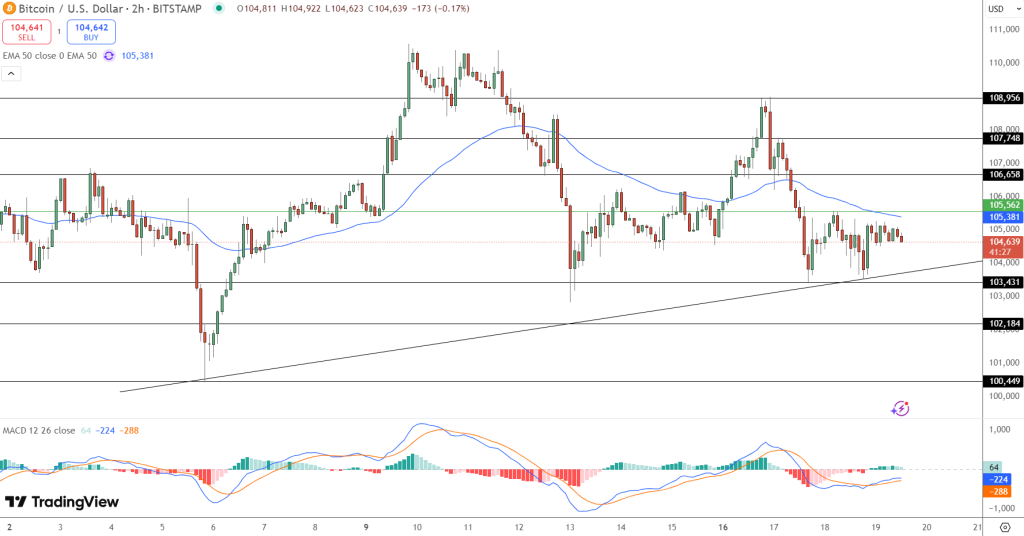Bitcoin’s Looming Supply Shock: Ancient Wallets Outpace Miner Production – Is a Price Surge Inevitable?
Bitcoin's oldest wallets are swallowing supply faster than miners can mint new coins—setting the stage for a historic squeeze.
HODLers vs. Miners: Who Controls the Future?
While Wall Street still debates whether crypto is 'real,' Bitcoin's original investors quietly amass more BTC than the entire mining network produces annually. These pre-2013 wallets now hold enough to drain exchanges twice over if they ever sell (they won't).
The Math Doesn't Lie
With daily miner output capped at 900 BTC and institutional ETFs vacuuming up supply, available liquidity could evaporate faster than a meme coin's market cap. Even Goldman Sachs can't short-circuit this supply-demand equation.
Last line? Tick tock, Wall Street.
"Ancient" bitcoin supply is growing faster than newly mined coins.
Addresses that have held coins for 10 years or longer are now outstripping new supply. pic.twitter.com/D9Mk12gPB2 — Coin Bureau (@coinbureau) June 19, 2025
- Ancient BTC holders rarely sell: net outflows occurred less than 3% of the time.
- After the 2024 election, even long-term wallets showed brief activity.
- Illiquid supply growth signals firm conviction despite price volatility.
This imbalance between shrinking liquid supply and ongoing demand is laying the groundwork for what analysts call a structural supply shock.
Institutions Gear Up to Absorb Millions of Bitcoins
The demand side of the equation is equally compelling. Asset manager Bitwise estimates that inflows into bitcoin will reach $120 billion by 2025, growing to $300 billion in a base case and $426 billion in a bullish scenario. That could absorb over 4 million BTC, nearly 19% of the total capped supply.
What’s fueling this?
- Public companies and pension funds are slowly increasing their BTC exposure
- US states and cities are exploring treasury allocations
- Advisors on major platforms now offer 1–3% BTC model portfolios
Despite $35 billion in sidelined interest due to compliance hesitations at firms like Goldman Sachs and Morgan Stanley, the institutional tide is shifting.
With these players collectively managing over $60 trillion, even small allocations have significant implications.
Technical Outlook: Bitcoin Coils Near Critical Trendline
On the 2-hour chart, Bitcoin is consolidating at $104,600. Price action is tightening along a rising trendline from the June 5 low.
The 50-period EMA is sloping down at $105,381 and has been rejecting upside moves. The MACD lines are flat below zero, indicating a potential breakout.

- Support: $104,000 and $103,431
- Resistance: $105,600-$105,800; above opens up $106,658 and $107,748
Bitcoin Trade Idea
Longs look to confirm a breakout above $105,600 to $106,658 and $107,748 with a stop under $104,000—shorts below $103,400 to $102,200 and $100,449.
Institutional flows are rising, and old supply is locking up BTC. Now, it’s time to see if price follows fundamentals or if volatility will shake out before the next leg up.
BTC Bull Token Nears $8.2M Cap as 58% APY Staking Attracts Last-Minute Buyers
With BTC trading NEAR $105K, investor focus is shifting toward altcoins, especially BTC Bull Token ($BTCBULL). The project has now raised $7,249,360 out of its $8,290,897 cap, leaving less than $1 million before the next token price hike. The current price of $0.00257 is expected to increase once the cap is hit.
BTC Bull Token links its value directly to Bitcoin through two Core mechanisms:
- BTC Airdrops reward holders, with presale participants receiving priority.
- Supply Burns occur automatically every time BTC increases by $50,000, reducing $BTCBULL’s circulating supply.
The token also features a 58% APY staking pool holding over 1.81 billion tokens, offering:
- No lockups or fees
- Full liquidity
- Stable passive yields, even in volatile markets
This staking model appeals to both DeFi veterans and newcomers seeking hands-off income.
With just hours left and the hard cap nearly reached, momentum is building fast. BTCBULL’s blend of Bitcoin-linked value, scarcity mechanics, and flexible staking is fueling strong demand. Early buyers have a limited time to enter before the next pricing tier activates.

